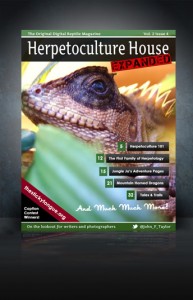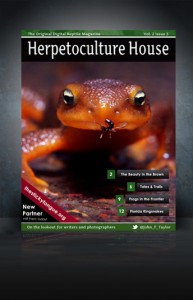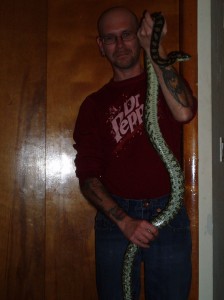For those who keep reptiles as captive pets respiratory infections are of most prevalent ailments seen today. Because of this simple fact we asked our ‘in house’ veterinarian Dr. Sean McCormack to discuss with us in depth about the issue. Without going too much into detail and spoiling the piece. We are giving you this article on respiratory infections in reptiles as free download. This preview is directly taken from the magazine itself and is one of our most talked about works when it comes to reptile care. As far as we know, no other media has ever covered this issue this in-depth outside of a veterinary manual.
“Respiratory diseases in captive reptiles are all too common unfortunately and are a great source of frustration for owners and vets alike, as well as being a serious welfare concern for the animals affected. There are many causes including parasitic, bacterial, viral and fungal infections as well as traumatic injury, tumours and cardiac disease. Reptile respiratory disease is often more severe and difficult to treat than in mammals due to differences in anatomy and physiology, outlined below. As a vet with a special interest in reptiles, I often look at online herpetological forums. Treatment of respiratory infections, or R.I’s, is one of the most frequent topics provoking debate and disagreements, prompting criticism of vets as well as hobbyists, and often resulting in potentially harmful or at least misleading information being spread by so called experts. I am writing this article to provide an overview on respiratory conditions and treatments in reptiles. Hopefully this will give a better understanding of how such conditions can be prevented, what to look for when they do occur, how they can be treated and why they can be so difficult to treat. I will also attempt to dispel any misconceptions and answer some of the most common questions I encounter in clinical practice as well as on hobbyist forums. Similarly I will try to explain the decision making process and give an insight from the vet’s side of the consult table as I do see this as an area where the vet-client relationship is frequently strained due to poor communication on both sides.”
You can download the entire article as it appears in Herpetoculture House Digital Magazine by clicking the link
If you enjoy what you read here today grab a subscription and stay on the cutting edge of herpetoculture! We also have bundled versions and single issues available as well.


 Reptile Veterinarian Awareness is not something that we often think about when we purchase a reptile and this topic actually was brought up in one of the social networks in a conversation with John Paul of
Reptile Veterinarian Awareness is not something that we often think about when we purchase a reptile and this topic actually was brought up in one of the social networks in a conversation with John Paul of 









